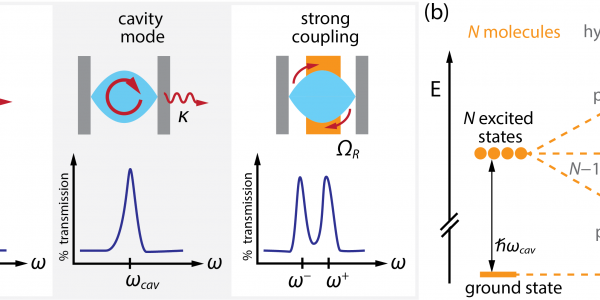Physics Colloquium with Marissa Weichman on New Experimental Platforms for Molecular Polaritonics
Polaritons are hybrid light-matter states with unusual properties that arise from strong interactions between a molecular ensemble and the confined electromagnetic field of an optical cavity. Cavity-coupled molecules can demonstrate energetics, reactivity, and photophysics dramatically distinct from their free-space counterparts, but the mechanisms and scope of these phenomena remain open questions. I will provide an overview of how polaritons are being explored as a new ingredient for chemistry and discuss the specific experimental platforms that the Weichman Lab is developing to investigate molecular reaction dynamics under vibrational strong coupling.
While polaritons are now well-established in solution-phase and solid-state systems, they have not been previously reported in isolated gas-phase molecules, where attaining sufficiently strong light-matter interactions is a challenge. We are able access the strong coupling regime in an intracavity cryogenic buffer gas cell optimized for the preparation of simultaneously cold and dense molecular ensembles and report a proof-of-principle demonstration in gas-phase methane. We strongly cavity-couple individual rovibrational transitions and explore a range of coupling strengths, detunings, and cavity geometries. We plan to harness this infrastructure as a new testbed for fundamental studies of polariton physics and chemistry in future work.
We are also searching for signatures of cavity-altered dynamics in benchmark solution-phase systems. So far, we have focused on radical hydrogen-abstraction processes, which have well-characterized reactive surfaces and can be initiated with photolysis and tracked directly on ultrafast timescales. We use ultrafast transient absorption to examine intracavity reaction rates with the goal of better understanding exactly how and when reactive trajectories may be influenced by strong light-matter interactions.
This lecture was made possible by the William C. Ferguson fund.

